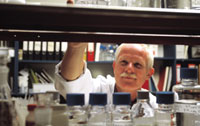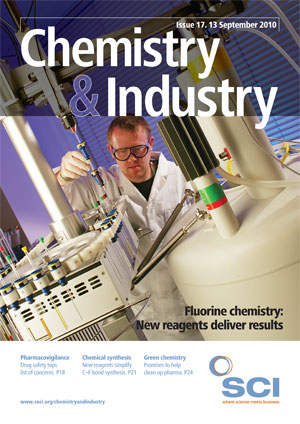Even after they are approved, drugs that make it onto the marketplace can never be guaranteed to be 100% safe, writes Sarah Daniels
In the past decade, at least 15 drugs have been permanently withdrawn from the market due to safety concerns.1 According to data from the Institute for Crisis Management (ICM), in the past five years the pharmaceutical industry has consistently been in the top 10 of the most crisis prone industries. The ICM defines a business crisis as: ‘Any problem or disruption that triggers negative stakeholder reactions that could impact the organisation’s financial strength and ability to do what it does’.2
The first major drug safety scandal was the thalidomide tragedy of the 1960s, when a new anti-emetic therapy offered to pregnant women caused rare limb deformities in their offspring. Unfortunately, this safety problem was not recognised until 10,000 children had been affected. This kick-started the safety regulations that continue to evolve to this day.
In 2001, when the lipid lowering agent Lipobay (cerivastatin) was found to be associated with rhabdomyolysis or muscle breakdown and, potentially, renal failure, there was an instantaneous effect on the Bayer share price, which dropped almost 20% within a month.3,4 More recently, withdrawal of the osteoarthritis drug Vioxx (rofecoxib) in 2004 cost its manufacturer Merck around $2.5bn/year in lost revenue, plus a further $5bn in lawsuits.5,6 Unsurprisingly, in 2004 the pharmaceutical industry topped the ICM’s list of the most crisis prone industries.
The outcome may have been very different, however, had Merck taken a fully integrated risk management approach to the identification and evaluation of its evolving clinical safety data. The multiple sclerosis drug Tysabri, for example, was withdrawn in 2005 because of a rare but serious side effect affecting the central nervous system. Following the development of a risk management plan and the implementation of risk minimisation measures, however, it was returned to the market a year later under a restricted distribution arrangement.
The infamous ‘Elephant man’ case
Then there was infamous ‘Elephant man’ case in 2006, when the biologic TGN1412 entered a clinical trial in man for the first time. The drug caused devastating systemic organ failure in six previously healthy subjects. The full extent of the drug effect on the subjects is still being elucidated. The German drug developer, TeGenero Immuno Therapeutics, entered into insolvency proceedings within six months of the catastrophe.7
Today, meanwhile, there is the ongoing debate on the cardiovascular safety of GlaxoSmithKline’s Avandia (rosiglitazone), with the regulators scrutinising every aspect of the data (C&I 2010, 14, 7). Despite a decision by the US Food and Drug Administration in July 2010 that Avandia was safe enough to remain on sale, the UK’s biggest drugmaker reported that it will allocate £1.6bn in Q2 2010 for various legal settlements, all of which will have inevitably affected its share price.8
Despite all of this, however, securing sufficient investment in pharmacovigilance and risk management systems is often an uphill battle because drug safety does not have a direct positive effect on the bottom line. Besides, how does one prove the absence of harm in the context of drug safety? The average spend on pharmacovigilance is estimated to be 6% to 13% of a company’s total R&D spend.9,10 Indeed, researchers in the US found that spending on post-market safety efforts by drug companies accounts for just 0.3% of sales revenue. In comparison, other R&D expenditures represent more than 15% of revenue, according to a report by Pricewaterhouse Coopers.10 However, costs are forecast to rise by up to 20% over the next five years.11
Why can’t we be sure that new drugs entering the market are 100% safe? The answer lies in the fact that clinical trials are designed to look for efficacy end points and do so in highly specialised patient populations. For example, people at the extremes of age, the elderly and children are often excluded, as are those with co-existing renal, hepatic or cardiovascular conditions, and those on certain concomitant medications. The new drug is administered for relatively short periods of time under heavily controlled conditions. Additionally, the trials are simply not big enough to detect uncommon side effects that may only crop up when the drug is used in millions of patients in a real life setting.

Often, the challenge that manufacturers face is to access and to interpret what is captured in the safety database; it is relatively simple to capture the events, but retrieving and interpreting the data, for example, signal detection and evaluation, is another matter entirely.
The response of regulators to these high profile safety scares is invariably to introduce more regulations and post-marketing safety hurdles for the industry to jump over. While there is no denying the need for better regulations, the lack of harmonisation between markets is challenging and often leads to unnecessary duplication of effort. Since 2005, for example, EU legislation has mandated Risk Management Plans (RMPs) and risk minimisation activities for most new drug approvals. In the US, the 2007 Food and Drug Administration (FDA) Authorisation Act provides the legislative structure for the Risk Evaluation and Minimisation Strategies (REMS), which is required when deemed necessary by the FDA or sponsor.
While both RMPs and REMS purport similar objectives – early signal detection and evaluation – they differ considerably in format and focus, requiring very different documents and compete for increasingly scarce resources. Theoretically, it ought to be possible to find areas of similarity and thus avoid too much duplication, but in practice this is easier said than done. Additionally, the milestones for required assessments of the effectiveness of the risk minimisation activities may be different, again inevitably leading to duplication of effort.
The other tool that the regulatory authorities are increasingly turning to, in the interests of public health, is the use of pharmacovigilance Inspections. In this scenario, the regulatory authority sends in its inspectors for a few days to the company, where they systematically pick over every aspect of the pharmacovigilance system. Again, in principle this is laudable, but in practice many companies get inspected in the same year by different inspectorates, for example, from the US, the FDA; from the EU, the European Medicines Agency (EMA); from the UK, the Medicines and Healthcare products Regulatory Agency (MHRA); and others. The time involved in the preparation and running of these inspections cannot be underestimated and they can significantly detract from routine pharmacovigilance activities.
The good news is that harmonisation initiatives are ongoing. The implementation of the much heralded 'pharmaceutical package' is eagerly awaited, for instance. The pharmaceutical package is the popular name for a series of measures adopted by the European Commission impacting the pharmaceutical industry. Among other things it includes proposals to provide clear roles and responsibilities for the key responsible parties, to strengthen transparency and communication on safety issues for patients and healthcare professionals and to strengthen companies' pharmacovigilance systems while reducing administrative burden. The legal proposals will be debated in the European Parliament, and in the Council, and are expected to become law within the next 18 months.
New initiatives take time to be implemented
However, new initiatives take time to be implemented and, in the meantime, the pharmaceutical industry now has other challenges to contend with as well. Sales growth is now measured in single digits, compared with double digits just a few years ago, as the day of the blockbusters drugs seems to be past. Around one third of the value of the global pharma market is expected to be lost as drugs come off patent in the next four years. This, together with escalating R&D costs, means that companies are trying to rationalise more, and claw back costs. For pharmacovigilance, the questions on every company’s lips are whether to outsource/offshore, what activities and processes should be offshored, and where to offshore to.

Whilst this can sometimes result in cheaper processing costs, however, it may be at the expense of the loss of invaluable in-house knowledge of the drug in question. In other cases, the promise of cheaper pharmacovigilance has just not materialised, as prices have tended to spiral upwards in more popular locations such as India, with companies competing for experienced personnel. The significant impact of communication difficulties consequent on working in different time zones and the knock on effect this can have on case quality are also just being realised.
Finally, it is worth noting that all of this extra focus on pharmacovigilance by the media, regulators and companies themselves, brings its own problems. According to an article by EMA regulators in 2009 in the New England Journal of Medicine,12 as we develop more tools to detect rare signals of safety related problems, we can expect an increase in false signals that will not be able to be validated and quantified in a randomised controlled trial because it would be impossible to run a trial of the required size and duration. The rarer the effect or event in question, the larger the study required to characterise it.
Perhaps more importantly, as risk averseness amongst regulators, Health Care Professionals (HCPs) and patients alike spirals ever upwards there is the distinct possibility that patient and HCP access to promising new drugs may be delayed or worse still denied altogether.
Hence, how we communicate risk to key stakeholders, patients and healthcare professionals becomes of paramount importance. Currently, according to the authors of the New England Journal of Medicine paper, regulators tend to emphasise the risks, while companies emphasise benefits – leaving patients and healthcare professionals searching for balanced information in one place.
The challenge is, therefore, for both industry and regulators alike to communicate in the same breath about benefits and risks; and to do so in language that patients can understand.
In conclusion, maintaining a new drug on the market relies heavily on the rapidly evolving and expanding discipline of pharmacovigilance, which itself faces a number of challenges. While having a good pharmacovigilance and risk management system in place can help to mitigate risk, to a greater or lesser extent, drug development will always remain a risky business.
Pharmacovigilance defined
Phamacovigilance was defined by the World Health Organization (WHO) in 2002 as the science and activities relating to the detection, assessment, understanding and prevention of adverse effects or any other drug-related problem. Simply put, for pharmaceutical companies this means the collection and mandatory reporting to regulatory authorities of adverse events or side effects, and the early detection of previously unknown adverse drug reactions or the ongoing assessment of safety of a marketed medicine.
Sarah Daniels is a senior partner at pharmaceutical consultancy TranScrip Partners, based in Reading, UK.
References
1.Government Accountability Office (GAO), 2006. Drug safety: Improvement needed in FDA’s post market decision-making and oversight process. http://www.gao.gov/new.items/d06402.pdf.
2. Institute for crisis management. Business trend reports: http://www.crisisexperts.com/Reports_main.htm
3.C. D. Furberg and B. Pitt, Curr. Control Trials Cardiovasc. Med., 2001, 2, 205.
4. R. Angelmar, Journal of Medical Marketing. 2007, 7, 77.
5. S. Prakash and V. Valentine, NPR, 2007: http://www.npr.org/templates/story/story.php?storyld=5470430
6. http://www.time.com/time/specials/packages/article/0,28804,1908719_1908717_1908537,00.html
7. G. Suntharalingam et al., N. Engl. J. Med., 2006, 355(10), 1018.
8. D. Schell. The evolving role of pharmacovigilance. Life cycle leader 2009. http://www.kendle.com/uploads/LSLeprintKilpatrick.pdf
9. A. Lamba, Pharmacovigilance – opportunity to differentiate. Infosys Customer Relationship Management, 2009. http://www.infosysblogs. com/customer-relationship-management/2009/11/ pharmacovigilance_opportunity.html
10. PricewaterhouseCoopers’ Health Research Institute. Unlocking the power of pharmacovigilance – An adaptive approach to an evolving drug safety environment. 2007
11. Visiongain. Pharmacovigilance 2009: Present challenges and future goals. http://www.visiongain.com/
12. H. G. Eichler et al, N. Engl. J. Med., 2009, 360 (14), 1378.





